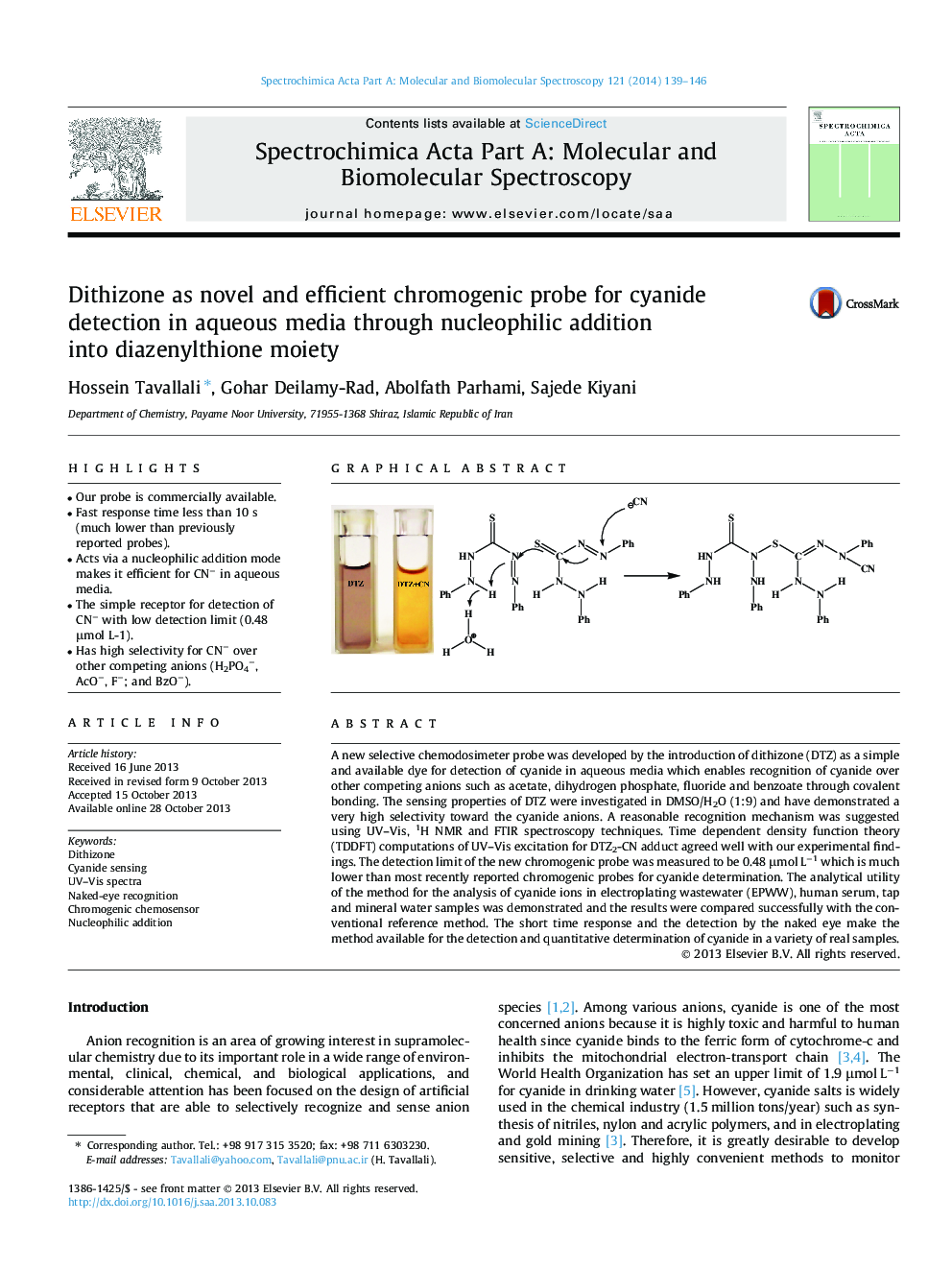| کد مقاله | کد نشریه | سال انتشار | مقاله انگلیسی | نسخه تمام متن |
|---|---|---|---|---|
| 1230456 | 1495247 | 2014 | 8 صفحه PDF | دانلود رایگان |

• Our probe is commercially available.
• Fast response time less than 10 s (much lower than previously reported probes).
• Acts via a nucleophilic addition mode makes it efficient for CN− in aqueous media.
• The simple receptor for detection of CN− with low detection limit (0.48 μmol L-1).
• Has high selectivity for CN− over other competing anions (H2PO4−, AcO−, F−; and BzO−).
A new selective chemodosimeter probe was developed by the introduction of dithizone (DTZ) as a simple and available dye for detection of cyanide in aqueous media which enables recognition of cyanide over other competing anions such as acetate, dihydrogen phosphate, fluoride and benzoate through covalent bonding. The sensing properties of DTZ were investigated in DMSO/H2O (1:9) and have demonstrated a very high selectivity toward the cyanide anions. A reasonable recognition mechanism was suggested using UV–Vis, 1H NMR and FTIR spectroscopy techniques. Time dependent density function theory (TDDFT) computations of UV–Vis excitation for DTZ2-CN adduct agreed well with our experimental findings. The detection limit of the new chromogenic probe was measured to be 0.48 μmol L−1 which is much lower than most recently reported chromogenic probes for cyanide determination. The analytical utility of the method for the analysis of cyanide ions in electroplating wastewater (EPWW), human serum, tap and mineral water samples was demonstrated and the results were compared successfully with the conventional reference method. The short time response and the detection by the naked eye make the method available for the detection and quantitative determination of cyanide in a variety of real samples.
Figure optionsDownload as PowerPoint slide
Journal: Spectrochimica Acta Part A: Molecular and Biomolecular Spectroscopy - Volume 121, 5 March 2014, Pages 139–146